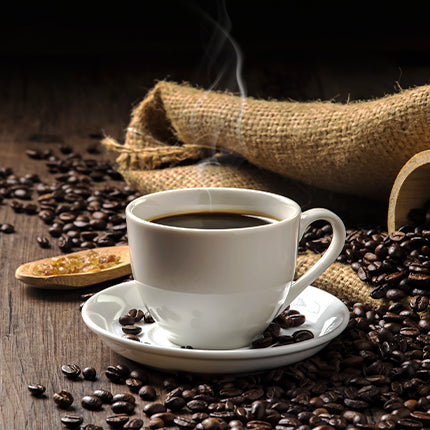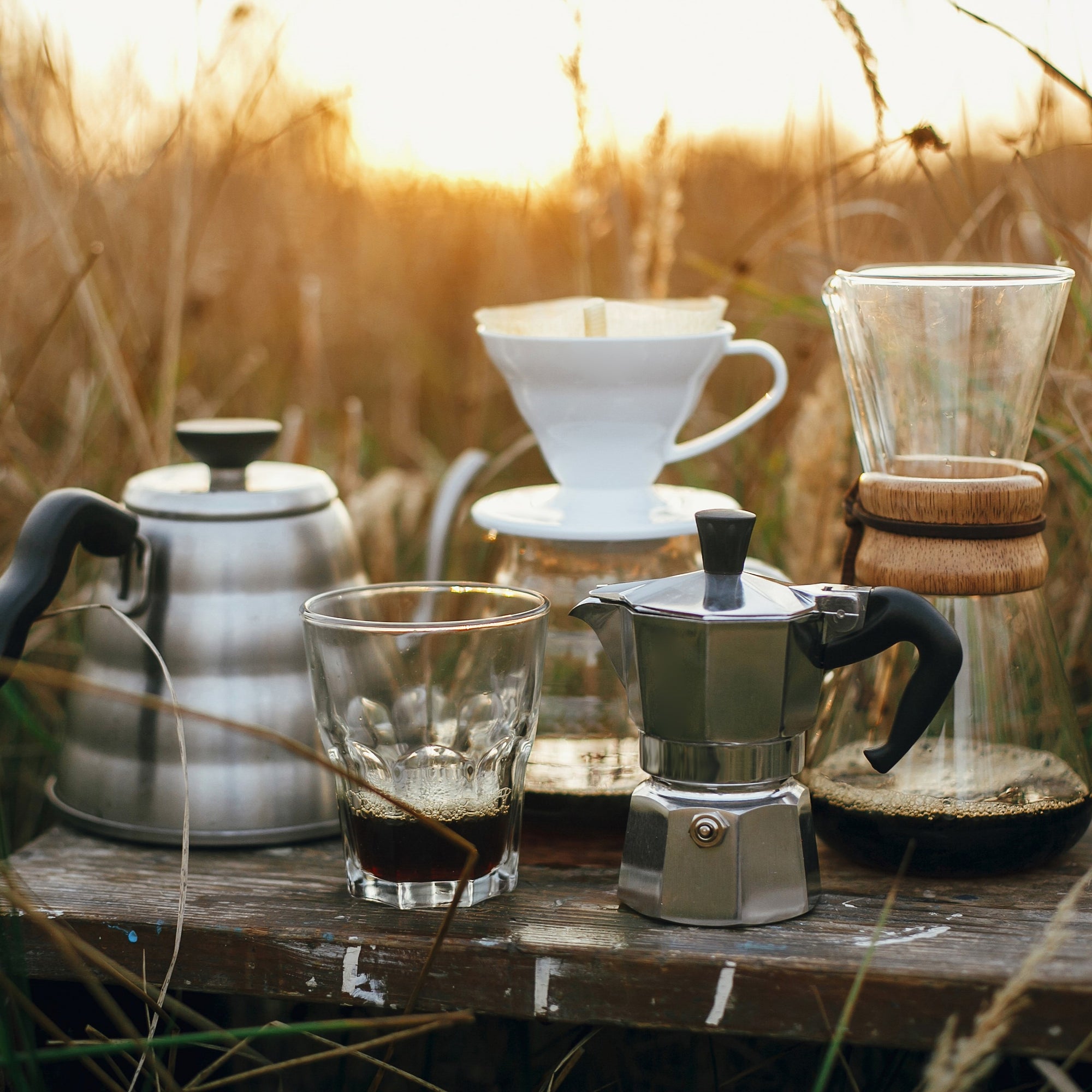The Science Behind Coffee Developing: How Temperature Level and Time Affect Your Beverage
Comprehending the scientific research behind coffee developing discloses that temperature and time are not plain variables however pivotal aspects that determine the beverage's flavor profile and total top quality. As we discover the subtleties of these components, the concern arises: just how can one successfully balance temperature and time to accomplish that best mixture?
The Chemistry of Coffee Removal
The chemistry of coffee extraction delves right into the detailed processes that transform raw coffee beans right into the aromatic drink enjoyed worldwide. This makeover largely involves the solubility of numerous compounds existing in the beans, which are affected by aspects such as grind dimension, water top quality, and the brewing method employed.
Throughout the developing process, hot water serves as a solvent, drawing out soluble compounds, consisting of caffeine, sugars, lipids, and acids, from the coffee grounds. Each compound contributes to the flavor profile, scent, and body of the final beverage. For circumstances, acids are in charge of intense and appetizing notes, while oils add to a rich mouthfeel.
The removal procedure is not consistent; various compounds dissolve at different prices. The preliminary stages of developing remove acids and sugars, leading to a pleasant acidity, while long term removal can result in bitterness due to over-extraction of undesirable substances. Understanding these chemical interactions is crucial for optimizing developing techniques, as the balance between extraction time and water temperature level can dramatically influence the overall top quality of the coffee. Eventually, understanding the chemistry of coffee extraction is key to achieving a all-round and savory mug.
Suitable Developing Temperatures
Discovering the ideal brewing temperature level is essential for opening the full potential of coffee flavors and scents - coffee brewing methods. Research study indicates that the optimum array for developing coffee exists in between 195 ° F to 205 ° F(90 ° C to 96 ° C) Within this array, the extraction process properly liquifies the preferable soluble substances in coffee beans, causing a flavorful and well balanced cup
Brewing at lower temperature levels, such as listed below 195 ° F(90 ° C ), might lead to under-extraction, generating an acidic and weak mixture with low-key flavors. Conversely, developing at temperatures surpassing 205 ° F(96 ° C) can cause over-extraction, generating a bitter and severe taste because of the too much dissolution of unwanted compounds, such as tannins.
In addition, the suitable developing temperature can differ relying on the coffee bean type and roast level. For circumstances, lighter roasts typically gain from somewhat greater temperature levels to boost their complex flavor profiles, while darker roasts may be much better fit to lower temperatures to reduce bitterness.
Eventually, maintaining precision in developing temperature levels is critical for achieving an unified balance of tastes, ensuring that every cup of coffee provides a rewarding sensory experience.
Effect of Brewing Time
Brewing time plays a crucial role in establishing the flavor profile and general high quality of coffee. The extraction process, which influences the preference, scent, and body of the beverage, is greatly reliant on just how long the coffee grounds touch with water. Much shorter developing times can cause under-extraction, resulting in a sour or weak flavor, as inadequate soluble compounds are liquified. Alternatively, long term brewing can result in over-extraction, where undesirable substances are launched, leading to a bitter or astringent taste.
Optimal developing time varies depending on the approach utilized and the grind dimension of the coffee. A French press usually needs regarding four minutes, while coffee extraction is generally finished within 25 to 30 secs. It is crucial to adjust brewing time in combination with other variables, such as water temperature level and coffee-to-water proportion, to achieve the wanted this contact form taste profile.
Recognizing the effect of developing time allows coffee enthusiasts to improve their developing techniques, inevitably enhancing the sensory experience of their mug (coffee brewing methods). With cautious attention to this variable, one can open the complete potential of the coffee, disclosing its distinct attributes and nuances
Developing Approaches and Their Effects

For example, methods like French press and cold brew enable for a longer steeping time, leading to a fuller body and robust flavor because of boosted removal of oils and soluble solids. Alternatively, coffee developing makes use of high stress and a shorter extraction time, producing a concentrated shot that stresses extreme tastes and an abundant crema.
Pour-over strategies, such as Chemex or V60, supply an even more regulated extraction process, allowing the brewer to control circulation price and water distribution, which can enhance brightness and clarity. On the other hand, percolation approaches cycle water via the coffee premises numerous times, leading to a stronger, usually bitter taste.
Last but not least, making use of paper filters versus steel filters can additionally affect the last preference; paper filters typically yield a cleaner cup by trapping oils and fine bits, while steel filters permit even more oils to go through, adding to a fuller mouthfeel - coffee brewing methods. Recognizing these subtleties can elevate the coffee experience substantially
Tips for Perfecting Your Mixture
A well-executed mixture can transform also the simplest coffee right into an exceptional experience. Grind the beans simply before brewing to optimize freshness, ensuring the work dimension matches your developing approach-- coarser for French press and finer for espresso.
Water quality plays a crucial duty; usage filtered water cost-free from pollutants. The ideal brewing temperature level ranges in between 195 ° F and 205 ° F(90 ° C to 96 ° C ) As well warm can blister the coffee, while as well cool might under-extract flavors.
Timing is similarly vital. For immersion methods, steeping for three to 5 mins is optimal, whereas drip techniques typically take around 5 mins. Experiment with brew times to find your recommended toughness.

Verdict
In recap, the complex relationship in between temperature and time is paramount in the coffee brewing process. Abiding by ideal brewing temperatures between 195 ° F and 205 ° F, along with exact timing customized per technique, makes sure the preferred flavor profile is attained. Recognizing these clinical principles equips individuals to refine their developing strategies, my company inevitably causing a much more balanced and delightful coffee experience. Proficiency of these elements is necessary for any type of coffee enthusiast seeking quality in their drink.
Understanding the scientific research behind coffee brewing reveals that temperature level and time are not simple variables but crucial aspects that dictate the drink's flavor account and general quality. Comprehending these chemical interactions is critical for maximizing brewing strategies, as the equilibrium between removal time and water temperature level can considerably influence the total quality of the coffee.Brewing time plays an essential role in determining the taste account and general quality of coffee. By concentrating on these elements-- bean high quality, her latest blog grind dimension, water temperature level, soaking time, and proportion-- you can elevate your coffee developing procedure, resulting in a regularly premium cup.
In summary, the complex relationship in between temperature and time is vital in the coffee developing procedure.